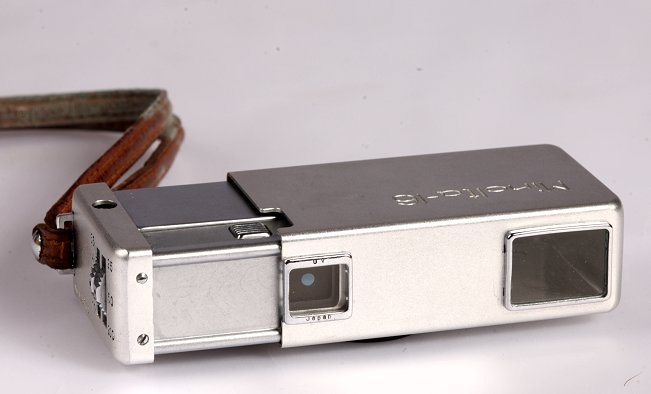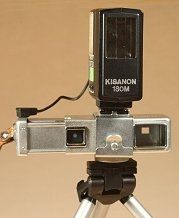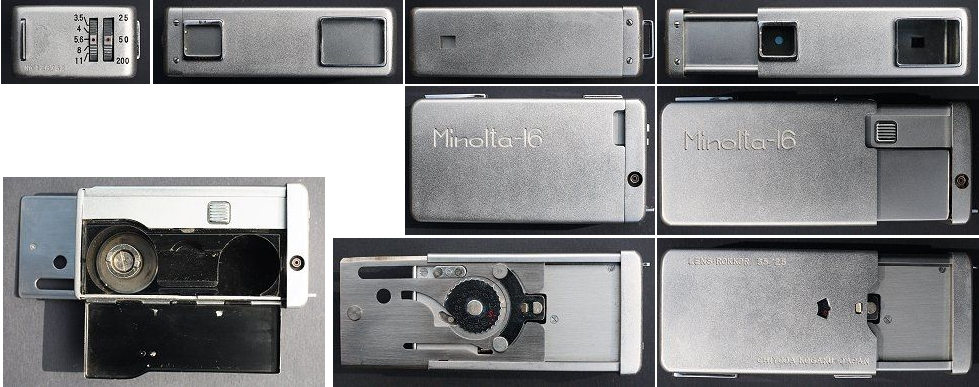

Minolta 16

Minolta 16 bought eBay on August 21st, 2009 (14,99£ +5£ sending fees).
Designed in the 1950's by the Company KONAN, manufacturing was then taken by Minolta. This is the first version (1957-1960) under the Minolta name, you can see under the camera that the manufacturer is still called Chiyoda Kogaku, and the logo is different from that of future models.
 This camera is exceptional for the accessories that accompany it:-Filters (in their distributor-box): 81A to remove the blue haze on the pictures of snow or sea in bright sunshine, 80A (blue) for use of daylight film in tungsten lighting, Y48 (yellow) to improve contrast with black & white films, close-up lenses No. 1 and No. 2.-Support for flash, with tripod thread.-And the user's manual.
This camera is exceptional for the accessories that accompany it:-Filters (in their distributor-box): 81A to remove the blue haze on the pictures of snow or sea in bright sunshine, 80A (blue) for use of daylight film in tungsten lighting, Y48 (yellow) to improve contrast with black & white films, close-up lenses No. 1 and No. 2.-Support for flash, with tripod thread.-And the user's manual.
This camera uses 16mm film, pre-loaded into a magazine (but the manual shows you how to load your own magazines if you want, a development reel is available as an option). The film may be perforated or not, the advance is done through the axis and the 10x14mm image fit between the perforations.The focusing is optimal at 15ft (4.60m), the image is sharp to the infinity thanks to the depth of field of the lens. The close-up lenses allow the focusing:For n° 1: at 3.3 ft ± 4" (1m ± 10cm).For n°2: at 2 ft ± 2" (60cm ± 5)The shutter release button appears when you pull the side of the device, when closing, the film is advanced and the shutter cocked (the blue dot on the expanded camera indicates the shutter is cocked). 3 Shutter speeds: 1 / 25s , 1 / 50s, 1 / 200s and 5 aperture values from 3.5 to 11.
 I photographed the Minolta 16 on a tripod and with a flash thanks to the provided support. Don't you think that it looks like E.T.?
I photographed the Minolta 16 on a tripod and with a flash thanks to the provided support. Don't you think that it looks like E.T.?
 To enable comparison, I took the same pictures of Kiev Vega and I have arranged them the same way.
To enable comparison, I took the same pictures of Kiev Vega and I have arranged them the same way.